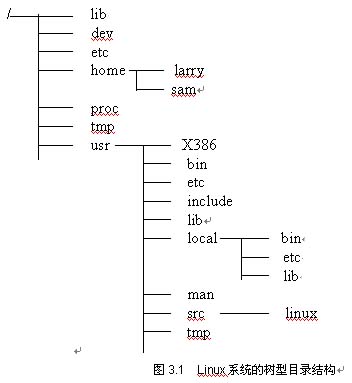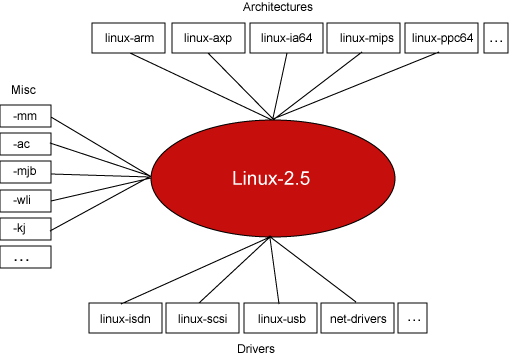MySQL安装与使用方法的具体简介
MySQL 安装与使用一、什麽是 MySQL
MySQL (发音为 "My Ess Que Ell")是 Tcx 公司(http://www.tcx.se)开发的一个多人使用、多执行绪的 SQL 资料库 Server。MySQL 主要的目标在快速、稳定和容易使用。
MySQL 可在此 http://www.mysql.net/ 取得。
二、MySQL 的安装
本文所使用的 MySQL 版本为 mysql-3.22.27.tar.gz(原始码档),作业环境为 RedHat6.0 +CLE0.8 。
MySQL 预设情况下会安装至 /usr/local 目录下,不过为了日後移除方便,建议将 mysql 独立安装在 /usr/local/mysql 目录。底下为安装 MySQL 的步骤:
取得 mysql-3.22.27.tar.gz 後, 於 /usr/local 目录下解开:
# cd /usr/local
# tar zxvf mysql-3.22.27.tar.gz
# cd mysql-3.22.27
设定 configure 安装选项,选择安装目录 (prefix)以及支援中文 Big5 码(with-charset=big5):
# ./configure --prefix=/usr/local/mysql #--with-charset=big5
开始编译并安装:
# make
# make install
# scripts/mysql_install_db
最後一个步骤是用来产生 MySQL grant tables(会建立一个 mysql 资料库和一些 tables,用来管理使用 MySQL 的授权资讯,也就是使用者有哪些使用资料库的权限)。
三、启动、停止 MySQL
要启动 MySQL 的方法:(以本文将 MySQL 安装在 /usr/local/mysql 为例)
# /usr/local/mysql/share/mysql.server start
注意在第一次执行前,须将 mysql.server 设成可执行(chmod 744 mysql.server),另外可将这行指令加在 /etc/rc.d/rc.local 档中,让 MySQL 在开机时自动启动。
要停止 MySQL 的方法:
# /usr/local/mysql/bin/mysqladmin shutdown
如果你为 MySQL Administrator root 帐号(非作业系统的 root)设了密码,要停止 MySQL 则必须像下列这样做,MySQL 会询问你 root 的密码後才会执行 shutdown 的工作:
# /usr/local/mysql/bin/mysqladmin -u root -p shutdown
四、管理与使用 MySQL 简介
在你开始前
MySQL 提供了许多工具 (Client Tools)来与 MySQL 资料库 Server 连线,其中最主要的为 mysql 交谈式连线工具与 mysqladmin 公用程式,大部份时候使用者会用 mysql 来和资料库 Server 交谈。底下就以 mysql 连线工具来介绍如何维护与使用 MySQL。(以本文安装为例,mysql 工具位於 /usr/local/mysql/bin/mysql)。
mysql 的使用语法如下:
mysql [-u username] [-h host] [-p[password]] [dbname]
MySQL 资料库有自己一套使用者帐号与权限管控方法,所以这边所指定的 username 与 password 是 MySQL 的使用者与密码,而不是作业系统的使用者与密码(当然任何使用者都能执行 mysql ,然後以 MySQL 的任何帐号进入使用) 。
在你第一次安装好 MySQL 时,MySQL 的管理帐号为 root,没有设定密码 (非作业系统的 root)。所以在开始前,请先照下列步骤为 root 设好密码:
使用 mysql 与 MySQL 资料库 Server 连线:
# /usr/local/mysql/bin/mysql -u root mysql
Reading table information for completion of table and column names
You can turn off this feature to get a quicker startup with -A
Welcome to the MySQL monitor. Commands end with ; or \g.
Your MySQL connection id is 201 to server version: 3.22.27
Type 'help' for help.
mysql>
在下了 mysql -u root mysql 指令,指定以 root 帐号并开启 mysql 系统资料库,连线至 MySQL 後,会看到一些提示讯息与 mysql 工具的提示符号,以後大部份的工作皆在此提示符号下完成。
更改 MySQL系统管理者 root 密码:
mysql> update user set password=password('新密码') where user='root';
Query OK, 0 rows affected (0.00 sec)
Rows matched: 2 Changed: 0 Warnings: 0
mysql> FLUSH PRIVILEGES;
Query OK, 0 rows affected (0.00 sec)
mysql> quit
Bye
注意每个指令後要加上一个分号 ";" 才会让 mysql 开始执行。而第二道指令会让已载入记忆体的 mysql 系统资料库更新,最後离开 mysql 工具程式。
在更新 root 密码後,日後要与 MySQL 连线的方法为:
mysql -u root -p新密码
或者是这样,让 mysql 询问 root 的密码:
mysql -u root -p
资料库维护
接下来,我们以简单的通讯录资料库作为例子,来介绍如何用 mysql 工具程式来做资料库的维护(新增、授权、资料表维护等)。
首先,以 MySQL root 帐号连线後建立一 addbook 资料库:
# /usr/local/mysql/bin/mysql -u root -p
Enter password:
Welcome to the MySQL monitor. Commands end with ; or \g.
Your MySQL connection id is 207 to server version: 3.22.27
Type 'help' for help.
mysql> create databae addbook;
Query OK, 1 row affected (0.00 sec)
指定使用 addbook 资料库,并建立一个 friends 资料表:
mysql> use addbook;
Database changed
mysql> create table friends (
-> name Char(15),
-> telphone VarChar(20),
-> icq Char(10),
-> address VarChar(30)
-> );
Query OK, 0 rows affected (0.00 sec)
新增几笔资料,并查询看看:
mysql> insert into friends values(
-> "maa", "29016710", "46243046", "台北县新庄市"
-> );
Query OK, 1 row affected (0.00 sec)
mysql> insert into friends (name, icq, telphone, address ) Values (
-> "cxlin", "39425893", "7654321", "台北县"
-> );
Query OK, 1 row affected (0.01 sec)
mysql> select * from friends;
+-------+----------+----------+--------------+
| name | telphone | icq | address |
+-------+----------+----------+--------------+
| maa | 29016710 | 46243046 | 台北县新庄市 |
| cxlin | 7654321 | 39425893 | 台北县 |
+-------+----------+----------+--------------+
2 rows in set (0.00 sec)
第二个 insert 指令指定了资料栏位的插入顺序,用法较第一个为弹性,而第一个指令必须依资料表建立结构时的顺序插入资料。
更新、删除资料表记录:
mysql> update friends set address = "桃园县" where name = "cxlin";
Query OK, 1 row affected (0.00 sec)
Rows matched: 1 Changed: 1 Warnings: 0
mysql> select * from friends where name = "cxlin";
+-------+----------+----------+---------+
| name | telphone | icq | address |
+-------+----------+----------+---------+
| cxlin | 7654321 | 39425893 | 桃园县 |
+-------+----------+----------+---------+
1 row in set (0.00 sec)
mysql> delete from friends where name = "maa";
Query OK, 1 row affected (0.01 sec)
mysql> select * from friends;
+-------+----------+----------+---------+
| name | telphone | icq | address |
+-------+----------+----------+---------+
| cxlin | 7654321 | 39425893 | 桃园县 |
+-------+----------+----------+---------+
1 row in set (0.00 sec)
最後,建好资料库与资料表後,把 addbook 资料库中所有资料表的使用权限(select、insert、update、delete)授权给 maa@localhost(再次提醒,此处的 maa 为 MySQL 的使用者帐号,而非作业系统的 maa 帐号):
mysql> grant select, insert, update, delete
-> on addbook.*
-> to maa@localhost identified by '1234567';
Query OK, 0 rows affected (0.00 sec)
之後,可用 maa 的身份进入 MySQL 存取 addbook 资料库:
# /usr/local/mysql/bin/mysql -u maa -p addbook
Enter password:
Reading table information for completion of table and column names
You can turn off this feature to get a quicker startup with -A





